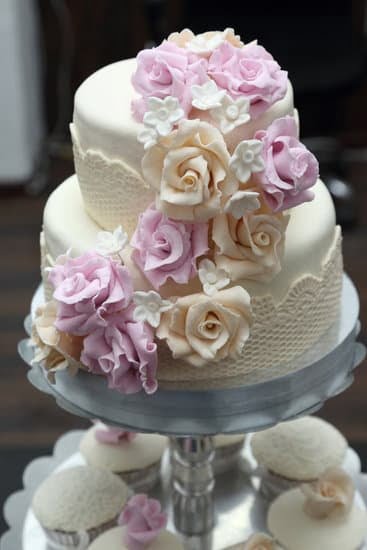Whether you’re a professional baker or an enthusiastic home cook, meringue is a must-have in your cake decorating toolkit. Its unique characteristics make it the perfect choice for adding a touch of elegance and finesse to any dessert creation. With its light and delicate texture, meringue brings an ethereal quality to cakes, creating a stunning visual appeal that is hard to resist.
One of the key reasons why meringue has become so popular in cake decorating is its versatility. It can be used in various forms, from simple dollops of whipped meringue to intricate piping designs. No matter how it’s incorporated, meringue adds an element of sophistication to any cake. Whether you’re looking to create classic designs or experiment with more avant-garde decorations, meringue provides endless possibilities for creativity.
Not only does meringue excel in terms of aesthetics, but it also enhances the overall taste and texture of cakes. The delicate crisp outer layer gives way to a soft and pillowy interior, elevating every bite of the dessert experience. This heavenly combination creates an engaging contrast that captivates both the eye and palate.
So, if you’re ready to elevate your cake decorating game, look no further than meringue. In the following sections, we will explore the different types of meringue used in cake decorating, essential ingredients and equipment needed for making meringue, step-by-step instructions on preparing it successfully, pro tips for flawless decorating techniques, delicious recipes tailored for various occasions and troubleshooting solutions for when things don’t go as planned.
Get ready to unleash your creativity and take your cakes to new heights with this exquisite confectionery marvel.
Types of Meringue Used in Cake Decorating
When it comes to cake decorating, meringue is a versatile and essential element that brings a light and delicate touch to any dessert. There are three main types of meringue commonly used in cake decorating: Swiss, Italian, and French.
Swiss meringue is made by gently heating egg whites and sugar together over a double boiler, whisking constantly until the sugar has dissolved. This type of meringue is known for its stability and creamy texture, making it perfect for creating smooth finishes or piping intricate designs on cakes. Swiss meringue buttercream, which combines Swiss meringue with butter and flavorings, is also a popular choice for frosting cakes.
Italian meringue involves whipping hot sugar syrup into beaten egg whites. This method creates a glossy and stable meringue that holds its shape well. Italian meringue is ideal for making fluffy peaks or creating show-stopping decorations like swirled peaks or piped flowers. It is also commonly used as a base for mousses or semifreddos.
French meringue is the simplest type of meringue to make, as it only requires beating egg whites with sugar until stiff peaks form. This classic type of meringue has a lighter texture compared to Swiss or Italian varieties but can still be used for various decorative purposes such as making rosettes or filling macarons.
| Meringue Type | Characteristics |
|---|---|
| Swiss Meringue | Stable; creamy texture; great for smooth finishes or intricate designs. |
| Italian Meringue | Glossy; holds shape well; ideal for fluffy peaks or show-stopping decorations. |
| French Meringue | Light texture; versatile; commonly used for making rosettes or filling macarons. |
By understanding the specific characteristics of each meringue type and the effects they have on cake decorations, you can choose the right meringue for your desired cake design. Whether you’re looking for a stable base, a glossy finish, or a lighter texture, experimenting with different meringue types opens up endless possibilities in cake decorating.
Essential Ingredients and Equipment for Making Meringue
To successfully make meringue for cake decorating, it is crucial to have the right ingredients and equipment. Here are the essential items you will need:
Ingredients:
- Egg whites: Fresh eggs are key to achieving a stable and fluffy meringue. Make sure there is no trace of yolk in the egg whites, as any fat can prevent proper whipping. Room temperature egg whites work best.
- Sugar: High-quality granulated sugar is essential for giving meringue its sweetness and structure. Avoid using powdered or confectioners’ sugar, as they often contain additives that can affect the texture of the meringue.
- Cream of tartar (optional): Cream of tartar can be added to stabilize the whipped egg whites and help them hold their shape. While not necessary, it can be beneficial if you want extra stability.
Equipment:
- Mixing bowl: Use a clean and dry stainless steel or glass mixing bowl that is free from grease or residual water, as these can interfere with the whipping process.
- Mixer: A stand mixer with a whisk attachment is highly recommended for making meringue, as it allows for hands-free whipping and ensures consistent results. However, a handheld mixer or even whisking by hand can also be used.
- Rubber spatula: A rubber spatula is useful for gently folding in sugar and other additives into the whipped egg whites without deflating them.
- Piping bag and tips (optional): If you plan to pipe your meringue decorations onto your cakes, having a piping bag and various tips will give you more control over your designs.
It’s important to note that cleanliness is crucial when working with meringue, as any residue can affect its texture and stability. Before starting, ensure that all utensils, bowls, and equipment are clean and free from any oil or grease.
By having these essential ingredients and equipment at hand, you’ll be well-prepared to create beautiful and delicious meringue decorations for your cakes.
Step-by-Step Guide to Making Meringue for Cake Decorating
Making meringue for cake decorating may seem like a daunting task, but with the right technique and instructions, it can be a breeze. Follow this step-by-step guide to achieve perfect meringue every time.
- Gather your ingredients: To make meringue, you will need fresh egg whites, high-quality sugar, cream of tartar (optional), and any flavorings or colors you desire.
- Prepare your equipment: It is essential to have clean and dry equipment before starting. Use a stand mixer or handheld mixer with a whisk attachment to beat the egg whites.
- Whip the egg whites: Start by beating the egg whites on low speed until they become frothy. Then, increase the speed to medium-high and continue beating until soft peaks form.
- Add sugar gradually: With the mixer still running, add the sugar slowly, about one tablespoon at a time. This allows the sugar to dissolve properly and prevents graininess in your meringue. Continue beating until stiff peaks form.
- Achieve desired consistency: The key to successful meringue is achieving stiff peaks that hold their shape. To test if it’s ready, turn off the mixer and lift the whisk straight up – if the peaks remain upright without collapsing, you’ve reached the right consistency.
Tips and Tricks for Perfect Meringue
- Use room temperature eggs: Cold eggs take longer to whip up and may not achieve optimal volume. Leave your eggs out at room temperature for about 30 minutes before separating them.
- Avoid any traces of fat: Even a small amount of fat can ruin your meringue. Make sure your mixing bowl and whisk are clean and free from any grease or oil.
- Add cream of tartar for stability (optional): Cream of tartar is an acidic ingredient that helps stabilize the egg whites and prevent them from collapsing. It is especially useful when making Swiss or French meringue.
- Choose the right sugar: It’s important to use superfine or caster sugar for meringue as it dissolves easily. If you only have granulated sugar, you can pulse it in a food processor until finely ground.
- Bake at a low temperature: When using meringue as a decoration, bake it at a low temperature (around 250°F or 120°C) to dry it out slowly. This will result in crisp, light, and stable decorations.
Now that you have mastered the art of making meringue, you can elevate your cake decorating skills to new heights. Remember to practice and experiment with different techniques to unleash your creativity and create stunning meringue decorations for all your cakes.
Pro Tips for Successful Meringue Decorating
Preventing Common Meringue Issues
To ensure successful meringue decorating, it’s important to be aware of common issues that can arise and how to prevent them. One common problem is deflation, which occurs when the meringue loses its volume after being piped onto the cake. To avoid this, make sure your egg whites are at room temperature before beating them.
Cold egg whites can lead to a less stable meringue. Additionally, be careful not to overbeat the egg whites, as this can cause the proteins to break down and result in a weak meringue.
Another issue that can occur with meringue is weeping, where small droplets of moisture form on the surface of the decoration. To prevent this, make sure your cake layers are completely cooled before adding the meringue. Moisture from warm cakes can cause condensation on top of the meringue. It’s also important to store any leftover cake decorated with meringue in a cool and dry place to minimize weeping.
Piping Techniques and Designs
Piping is an essential skill for meringue decorating, as it allows you to create intricate designs and shapes on top of your cakes. When piping meringue, use a piping bag fitted with a decorative nozzle or tip that suits your desired design. Practice first on a piece of parchment paper or a baking sheet to perfect your technique before applying the meringue onto the cake.
There are endless possibilities when it comes to piping designs with meringue. For more elaborate decorations, such as flowers or rosettes, start from the center and work your way outwards in circular motions. For simpler designs like peaks or swirls, apply even pressure while squeezing the piping bag and lift it up gently for clean edges.
Flavoring and Coloring Techniques
Meringue decorations can be elevated by incorporating various flavors and colors. To add flavor to your meringue, consider incorporating extracts like vanilla, almond, or citrus zest during the whisking process. For a pop of color, use gel food coloring instead of liquid coloring to minimize moisture in the meringue.
You can also experiment with different textures and finishes for your meringue decorations. For a glossy appearance, lightly torch the piped meringue using a kitchen torch. If you prefer a matte finish, bake the meringue decorations in a low-temperature oven until they are dry and crisp.
Remember to taste test any additions to your meringue to ensure the flavors complement your cake and are not overpowering. With practice and creativity, you will soon master the art of successful meringue decorating.
Meringue Recipes for Various Cake Types and Occasions
When it comes to cake decorating, meringue is a versatile and delicious choice. Not only does it add a light and delicate touch to cakes, but it also brings aesthetic appeal as a decorative element. Whether you’re preparing a classic lemon meringue cake or getting creative with different flavors and colors, there is a meringue recipe for every cake type and occasion.
Classic Lemon Meringue Cake
One of the most beloved meringue recipes for cake decorating is the classic lemon meringue cake. This refreshing dessert features layers of moist lemon cake filled with tangy lemon curd and topped with fluffy meringue. To achieve the perfect balance of flavors, be sure to use fresh lemons for both the cake and curd. The bright yellow color of the meringue adds a beautiful contrast to the white frosting, making this cake an eye-catching centerpiece.
Decadent Chocolate Meringue Cake
For chocolate lovers, a decadent chocolate meringue cake is the ultimate treat. This rich and indulgent dessert pairs layers of moist chocolate cake with silky smooth chocolate ganache filling, all covered in luscious meringue frosting. To enhance the chocolate flavor, consider adding espresso powder or finely chopped chocolate to your meringue mixture. This delightful creation is perfect for birthdays, anniversaries, or any occasion that calls for an extra dose of chocolate.
Variations for Special Occasions
In addition to classic flavors, there are endless variations of meringue recipes that can be tailored to different occasions. For birthday celebrations, consider incorporating funfetti sprinkles into your meringue decorations or opting for colorful swirls using gel food coloring. Wedding cakes can be adorned with elegant floral designs piped with delicate French meringue.
And holidays like Christmas can inspire festive flavors such as peppermint or gingerbread-infused meringue. The possibilities are truly endless when it comes to meringue recipes for various cake types and occasions.
With these meringue recipes, you can elevate your cake decorating skills and impress your guests with stunning creations that not only taste amazing but also look visually appealing. Whether you’re a beginner baker or an experienced decorator, experimenting with different flavors, colors, and designs will allow you to unleash your creativity in the most delicious way possible. So get out your mixer and start whipping up some meringue for your next cake masterpiece.
Troubleshooting Guide
While making meringue for cake decorating, it is not uncommon to encounter various issues that can leave even the most experienced bakers scratching their heads. However, fear not. This troubleshooting guide will provide you with solutions to common meringue mishaps and help you achieve perfect meringue every time.
Problem: Overwhipping
- When egg whites are overwhipped, they become grainy and dry, resulting in a dense and crumbly meringue.
Solution:
- If the meringue is still being whipped, stop immediately and check its consistency.
- If the meringue is already overwhipped, do not despair. Adding a fresh egg white to the mix can help balance out the texture.
- Another option is to gently fold in a small amount of melted chocolate or cream into the overwhipped mixture to soften it.
Problem: Undercooking
- Undercooked meringues tend to be chewy or sticky, lacking the desired airy texture.
Solution:
- Check if your oven temperature is accurate by using an oven thermometer. Adjust accordingly.
- Extend the baking time by increments of 5 minutes until the meringue has fully set and turned pale golden or slightly brown on top.
- Ensure that your oven door remains closed during baking to prevent sudden temperature drops that can affect the cooking process.
Problem: Excessive Browning
- While a slight browning is desired for a beautiful finish, excessive browning can ruin the appearance of your meringue decorations.
Solution:
- Reduce the oven temperature slightly or move the baking tray to a lower shelf position as higher heat tends to cause quicker browning.
- Cover the meringue lightly with aluminum foil midway through baking to shield it from excessive heat.
- Keep a close eye on the meringue during the final minutes of baking to prevent it from becoming too brown.
By following these troubleshooting tips, you can tackle common meringue problems with confidence and create stunning cake decorations that are sure to impress. Remember, even experienced bakers face challenges along the way, so don’t be discouraged. With a little practice and perseverance, you’ll become a master of meringue in no time.
| Problem | Solution |
|---|---|
| Overwhipping | – Stop whipping immediately\n – Add a fresh egg white or melted chocolate/cream\n |
| Undercooking | – Check oven temperature\n – Extend baking time in small increments\n – Keep oven door closed during baking |
| Excessive Browning | – Reduce oven temperature or move tray to lower shelf position\n – Cover meringue with foil midway through baking\n – Monitor closely during final minutes of baking |
Frequently Asked Questions (FAQs) about Meringue and Cake Decorating
In conclusion, meringue is a fantastic choice for cake decorating due to its versatility, lightness, and aesthetic appeal. Whether you’re looking to create intricate designs or add a delicate touch, meringue can provide that extra wow factor to your cakes. By understanding the different types of meringue and their specific characteristics, you can select the right one for your desired decorating techniques.
To successfully make meringue for cake decorating, it’s important to use fresh eggs and high-quality sugar. These fundamental ingredients, along with the necessary kitchen tools like a stand mixer or handheld mixer, will ensure that your meringue turns out perfect every time. Following a step-by-step guide and incorporating tips and tricks can help you achieve the ideal stiff peaks consistency.
When working with meringue, it’s common to encounter issues such as deflation or weeping. However, these problems can be easily prevented with expert advice and techniques. By knowing how to properly pipe meringue onto cakes and being creative with flavors and colors, you can take your cake decorations to the next level.
In addition to providing various meringue recipes tailored for different cake flavors and occasions, it’s important to address common troubleshooting problems that may arise while working with meringue. By offering comprehensive solutions for issues like overwhipping or excessive browning, readers can feel reassured that even experienced bakers encounter mishaps but should continue trying.
Lastly, compiling frequently asked questions about meringue and cake decorating helps clarify any doubts readers may have. Addressing concerns regarding stability of meringue decorations, storage options, or leftover meringue applications ensures that readers have a clear understanding of the topic.
With the knowledge gained from this article on meringue recipe for cake decorating – from understanding its uniqueness to troubleshooting common problems – you now have the confidence to explore your creativity in making stunning cakes adorned with delightful meringue decorations.
Frequently Asked Questions
What is the best meringue for cake?
The best meringue for a cake is typically Swiss meringue. Swiss meringue is made by whisking egg whites and sugar over a double boiler until the sugar dissolves, and then continuing to whisk off the heat until stiff peaks form.
This type of meringue is perfect for cakes because it creates a stable, glossy texture that holds up well when piped or spread onto a cake surface. It also has a slightly denser consistency compared to other types of meringue, which helps it hold its shape and provide a beautiful finish to any cake.
What are the 3 types of meringue?
The three types of meringue are French meringue, Italian meringue, and Swiss meringue. French meringue is made by beating egg whites until frothy, then gradually adding sugar while continuing to beat until stiff peaks form. It is the simplest type of meringue and often used as a base for many desserts like pavlovas or baked Alaska. Italian meringue involves pouring hot sugar syrup into whipped egg whites while continuing to beat until stiff peaks form.
This type of meringue is more stable than French meringue due to the addition of hot syrup and is commonly used for toppings on pies or soufflés. Lastly, Swiss meringue consists of heating egg whites and sugar over a double boiler until the sugar dissolves, then whisking off heat until stiff peaks form. Swiss Meringue provides stability and glossiness, making it ideal for frosting cakes.
What is the secret to making a good meringue?
The secret to making a good meringue lies in several key factors. First and foremost, ensuring that all equipment used (such as bowls and beaters) are clean and completely free from any grease or oil is crucial. Any trace of fat can hinder the formation of stiff peaks in the egg whites. Additionally, using room temperature egg whites allows them to whip up more easily compared to cold ones.
Another important aspect is gradually adding the sugar to the egg whites, ensuring it is added slowly and steadily while beating constantly to allow the sugar crystals to dissolve completely. This helps create a smooth texture in the meringue. Lastly, baking the meringue at a low temperature for a longer period of time allows it to dry out and become crispy on the outside while remaining soft and chewy on the inside. Taking these key factors into consideration will greatly increase your chances of achieving a perfect meringue every time.

Welcome to our cake decorating blog! My name is Destiny Flores, and I am the proud owner of a cake decorating business named Cake Karma. Our mission is to provide delicious, beautiful cakes for all occasions. We specialize in creating custom cakes that are tailored specifically to each customer’s individual needs and tastes.





